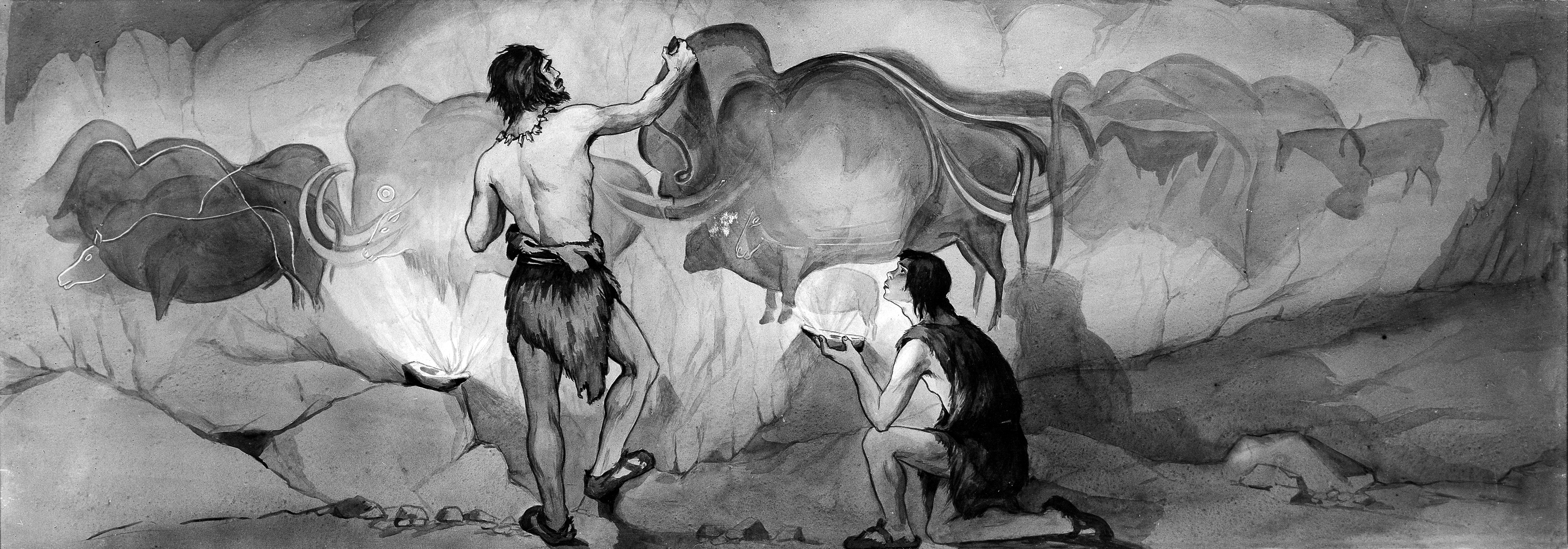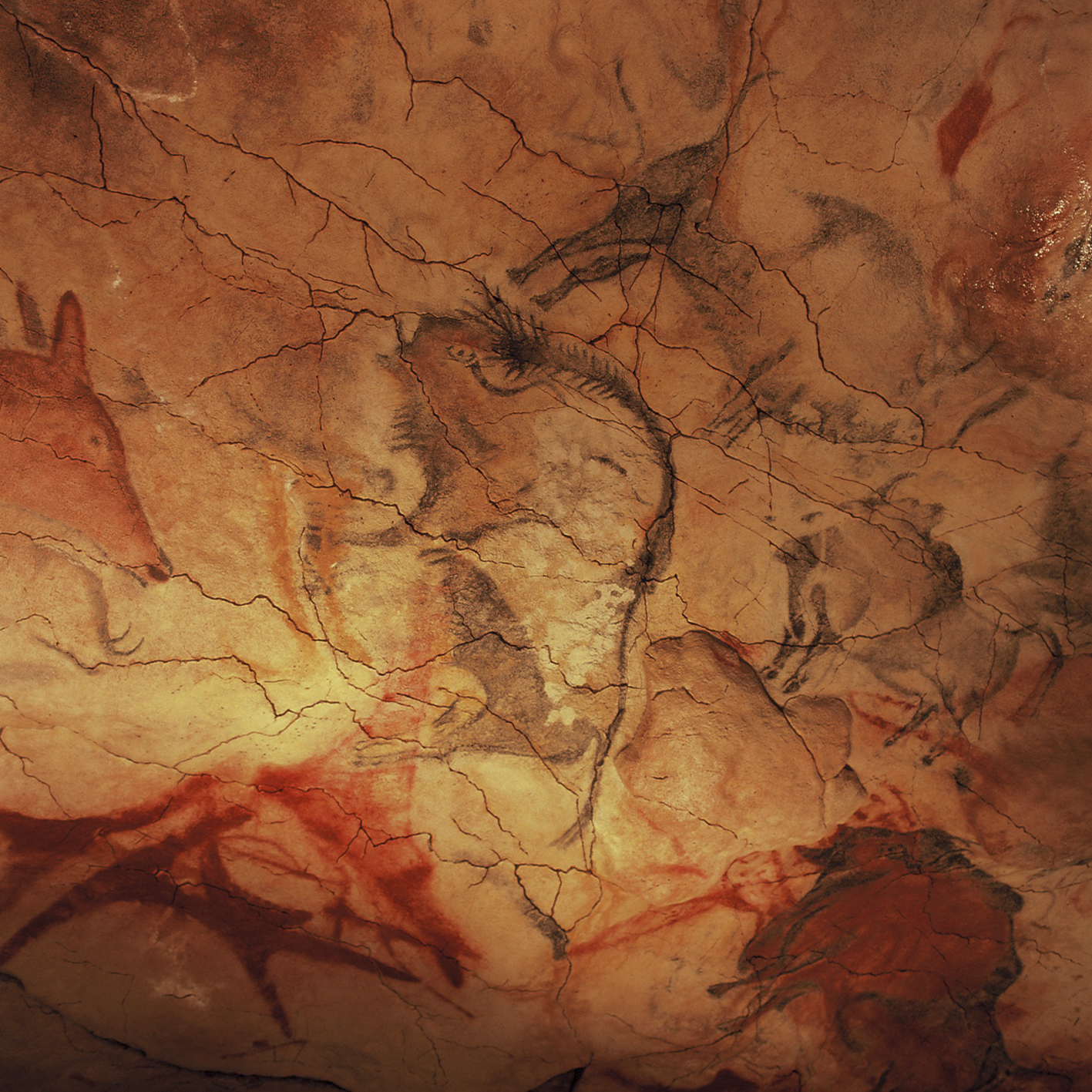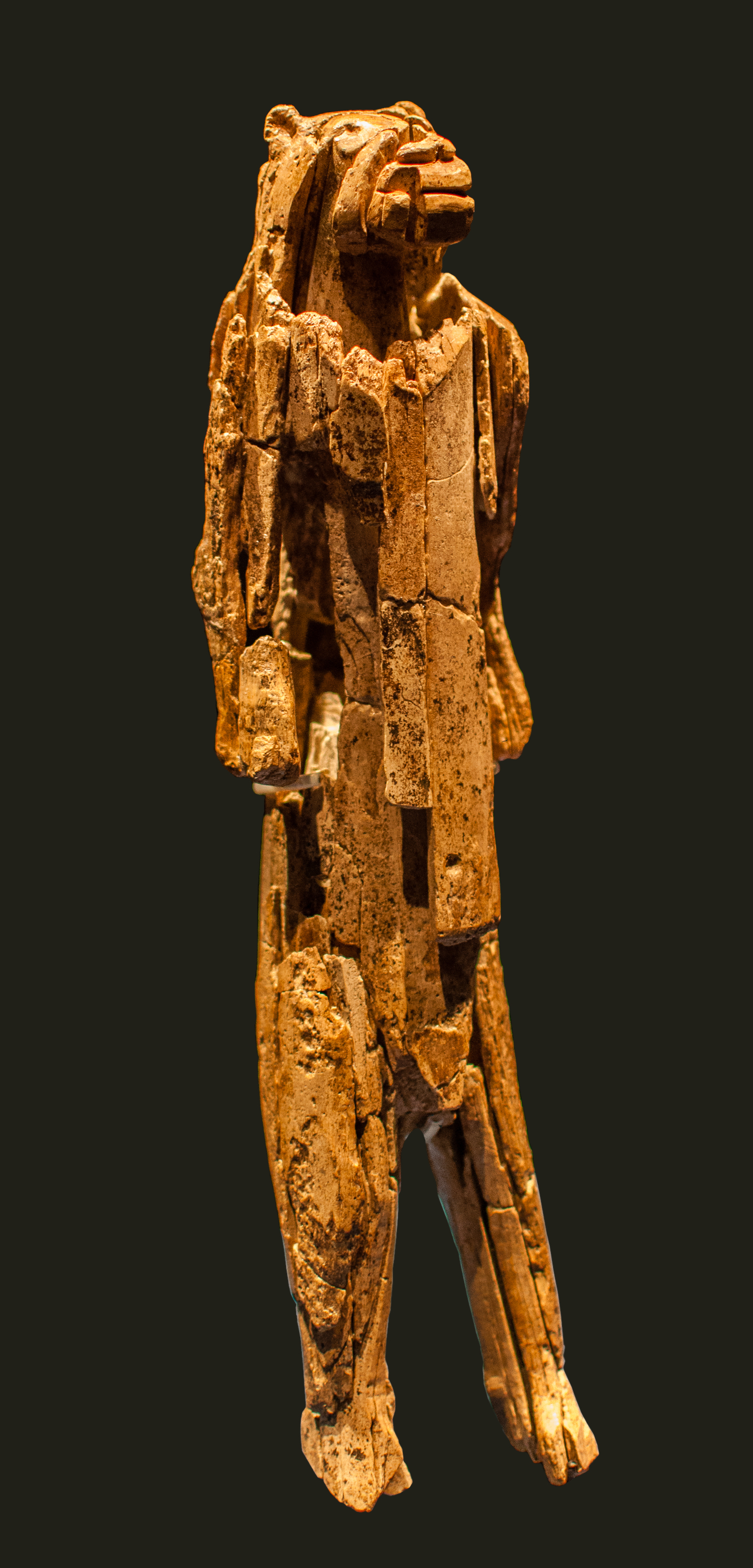|
Magdalenian
Magdalenian cultures (also Madelenian; ) are later cultures of the Upper Paleolithic and Mesolithic in western Europe. They date from around 17,000 to 12,000 years before present. It is named after the type site of Abri de la Madeleine, a rock shelter () located in the Vézère valley of Tursac in Dordogne, France. Édouard Lartet and Henry Christy originally termed the period ''L'âge du renne'' "the age of the reindeer". They conducted the first archaeological excavation of the type site, publishing in 1875. The Magdalenian is associated with reindeer hunters. Magdalenian sites contain extensive evidence for the hunting of red deer, wild horses, and other megafauna present in Europe toward the end of the Last Glacial Period. The culture was geographically widespread, and later Magdalenian sites stretched from Portugal in the west to Poland in the east, and as far north as France, the Channel Islands, England, and Wales. Besides la Madeleine, the chief stations of the Ma ... [...More Info...] [...Related Items...] OR: [Wikipedia] [Google] [Baidu] |
Azilian
The Azilian is a Mesolithic archaeological industry, industry of the Franco-Cantabrian region of northern Spain and Southern France. It dates approximately 10,000–12,500 years ago. Diagnostic Cultural artifact, artifacts from the culture include projectile points (microliths with rounded retouched backs), crude flat bone harpoons and pebbles with abstract decoration. The latter were first found in the River Arize at the type-site for the culture, the ''Mas d'Azil cave, Grotte du Mas d'Azil'' at Le Mas-d'Azil in the French Pyrenees (illustrated, now with a modern road running through it). These are the main type of Azilian art, showing a great reduction in scale and complexity from the Magdalenian Art of the Upper Palaeolithic. The industry can be classified as part of the Epipaleolithic or the Mesolithic periods, or of both. Archaeologists think the Azilian represents the tail end of the Magdalenian as the warming climate brought about changes in human behaviour in the area. The ... [...More Info...] [...Related Items...] OR: [Wikipedia] [Google] [Baidu] |
Ahrensburg Culture
The Ahrensburg culture or Ahrensburgian (c. 12,900 to 11,700 BP) was a late Upper Paleolithic nomadic hunter culture (or technocomplex) in north-central Europe during the Younger Dryas, the last spell of cold at the end of the Weichsel glaciation resulting in deforestation and the formation of a tundra with bushy arctic white birch and rowan. The most important prey was the wild reindeer. The earliest definite finds of arrow and bow date to this culture, though these weapons might have been invented earlier. The Ahrensburgian was preceded by the Hamburg and Federmesser cultures and superseded by the Maglemosian and Swiderian cultures. Ahrensburgian finds were made in southern and western Scandinavia, the North German plain and western Poland. The Ahrensburgian area also included vast stretches of land now at the bottom of the North and Baltic Sea, since during the Younger Dryas the coastline took a much more northern course than today. The culture is named after a tu ... [...More Info...] [...Related Items...] OR: [Wikipedia] [Google] [Baidu] |
Solutrean
The Solutrean industry is a relatively advanced flint tool-making style of the Upper Paleolithic of the Final Gravettian, from around 22,000 to 17,000 BP. Solutrean sites have been found in modern-day France, Spain and Portugal. Details The term ''Solutrean'' comes from the type-site of " Cros du Charnier", dating to around 21,000 years ago and located at Solutré, in east-central France near Mâcon. The Rock of Solutré site was discovered in 1866 by the French geologist and paleontologist Henry Testot-Ferry. It is now preserved as the Parc archéologique et botanique de Solutré. The industry was named by Gabriel de Mortillet to describe the second stage of his system of cave chronology, following the Mousterian, and he considered it synchronous with the third division of the Quaternary period. The era's finds include tools, ornamental beads, and bone pins as well as prehistoric art. Solutrean tool-making employed techniques not seen before and not rediscovere ... [...More Info...] [...Related Items...] OR: [Wikipedia] [Google] [Baidu] |
Cave Of Altamira
The Cave of Altamira ( ; ) is a cave complex, located near the historic town of Santillana del Mar in Cantabria, Spain. It is renowned for prehistoric cave painting, cave art featuring charcoal drawings and polychrome paintings of contemporary local fauna and human hands. The earliest paintings were applied during the Upper Paleolithic, around 36,000 years ago. The site was discovered in 1868 by Modesto Cubillas and subsequently studied by Marcelino Sanz de Sautuola. Aside from the striking quality of its polychromatic art, Altamira's fame stems from the fact that its paintings were the first European cave paintings for which a prehistoric origin was suggested and promoted. Sautuola published his research with the support of Juan de Vilanova y Piera in 1880, to initial public acclaim. However, the publication of Sanz de Sautuola's research quickly led to a bitter public controversy among experts, some of whom rejected the prehistoric origin of the paintings on the grounds that ... [...More Info...] [...Related Items...] OR: [Wikipedia] [Google] [Baidu] |
Lascaux
Lascaux ( , ; , "Lascaux Cave") is a network of caves near the village of Montignac, Dordogne, Montignac, in the Departments of France, department of Dordogne in southwestern France. Over 600 Parietal art, parietal cave painting, wall paintings cover the interior walls and ceilings of the cave. The paintings represent primarily large animals, typical local contemporary fauna that correspond with the fossil record of the Upper Paleolithic in the area. They are the combined effort of many generations. With continued debate, the age of the paintings is now usually estimated at around 17,000 to 22,000 years (early Magdalenian). Because of the outstanding prehistoric art in the cave, Lascaux was inducted into the UNESCO World Heritage List in 1979, as an element of the ''Prehistoric Sites and Decorated Caves of the Vézère Valley''. The original caves have been closed to the public since 1963, as their condition was quickly deteriorating, but there are now a number of replicas. H ... [...More Info...] [...Related Items...] OR: [Wikipedia] [Google] [Baidu] |
Abri De La Madeleine
The archaeological site Abri de la Madeleine (Magdalene Shelter) is a rock shelter under an overhanging cliff situated near Tursac, in the Dordogne ''département'' of the Aquitaine région of southwestern France. It represents the type site of the Magdalenian culture of the Upper Paleolithic. The shelter was also occupied during the Middle Ages. The medieval castle of Petit Marsac stands on the top of the cliff just above the shelter. Excavations Édouard Lartet, financed and helped by the Englishman Henry Christy, were the first systematic excavators of the site, starting in 1863, and published their findings in 1875 under the name of the Age of the Reindeer ("L'âge du renne"). Objects that were found at the la Madeleine site are distributed among a number of museums, including the Muséum de Toulouse, the Musee des Antiquites Nationales, St. Germain-en-Laye and the British Museum. Artifacts excavated from the site include: * The '' Bison Licking Insect Bite'', a 20,00 ... [...More Info...] [...Related Items...] OR: [Wikipedia] [Google] [Baidu] |
Epigravettian
The Epigravettian (Greek: ''epi'' "above, on top of", and Gravettian) was one of the last archaeological industries and cultures of the European Upper Paleolithic. It emerged after the Last Glacial Maximum around ~21,000 cal. BP or 19,050 BC. It succeeds the Gravettian culture in Italy. Initially named ''Tardigravettian'' (Late Gravettian) in 1964 by Georges Laplace in reference to several lithic industries found in Italy, it was later renamed in order to better emphasize its independent character. Three subphases, the ''Early Epigravettian'' (20,000 to 16,000 BP), the ''Evolved Epigravettian'' (16,000 to 14,000 BP) and the ''Final Epigravettian'' (14,000 to 8,000 BP), have been established, that were further subdivided and reclassified. In this sense, the Epigravettian is simply the Gravettian after ~21,000 BP, when the Solutrean had replaced the Gravettian in most of France and Spain. Several Epigravettian cultural centers have developed contemporaneously after 22,000 ye ... [...More Info...] [...Related Items...] OR: [Wikipedia] [Google] [Baidu] |
Upper Paleolithic
The Upper Paleolithic (or Upper Palaeolithic) is the third and last subdivision of the Paleolithic or Old Stone Age. Very broadly, it dates to between 50,000 and 12,000 years ago (the beginning of the Holocene), according to some theories coinciding with the appearance of behavioral modernity in early modern humans. It is followed by the Mesolithic. Anatomically modern humans (i.e. ''Homo sapiens'') are believed to have emerged in Africa around 300,000 years ago. It has been argued by some that their ways of life changed relatively little from that of archaic humans of the Middle Paleolithic, until about 50,000 years ago, when there was a marked increase in the diversity of Artefact (archaeology), artefacts found associated with modern human remains. This period coincides with the most common date assigned to early human migrations, expansion of modern humans from Africa throughout Asia and Eurasia, which may have contributed to the Neanderthal extinction, extinction of th ... [...More Info...] [...Related Items...] OR: [Wikipedia] [Google] [Baidu] |
Type Site
In archaeology, a type site (American English) or type-site (British English) is the site used to define a particular archaeological culture or other typological unit, which is often named after it. For example, discoveries at La Tène and Hallstatt led scholars to divide the European Iron Age into the La Tène culture and Hallstatt culture, named after their respective type sites. The concept is similar to type localities in geology and type specimens in biology. Notable type sites Africa * Nok ( Kaduna, Nigeria), of the Nok culture East Asia * Banpo ( Yangshao culture, Neolithic Yangshao culture, China) * Liangzhu Town, near Hangzhou ( Liangzhu culture, Neolithic, China) * Songguk-ri (Middle Mumun culture, southern Korea) * Suemura cluster of kilns – Kilns of Sue pottery (Middle and Late Kofun period, Osaka, Japan) * Sanage cluster of kilns — Kilns of and ( Nara and Heian period, Aichi Prefecture, Japan) Europe *a river terrace of the River Som ... [...More Info...] [...Related Items...] OR: [Wikipedia] [Google] [Baidu] |
Tursac
Tursac () is a commune in the Dordogne department in Nouvelle-Aquitaine in southwestern France. '' Abri de la Madeleine'' is the site of Magdalenian prehistoric finds. Population See also *Communes of the Dordogne department The following is a list of the 503 communes of the Dordogne department of France France, officially the French Republic, is a country located primarily in Western Europe. Overseas France, Its overseas regions and territories include Fren ... References Communes of Dordogne {{SarlatlaCanéda-geo-stub ... [...More Info...] [...Related Items...] OR: [Wikipedia] [Google] [Baidu] |
Édouard Lartet
Édouard Lartet (15 April 180128 January 1871) was a French geologist and paleontologist, and a pioneer of Paleolithic archaeology. He is also known for coining the prehistoric taxon '' Amphicyon'', making it one of the earliest-described fossil carnivorans in the palaeontological record. Biography Lartet was born near Castelnau-Barbarens, ' of Gers, France, where his family had lived for more than five hundred years. He was educated for the law at Auch and Toulouse, but having private means elected to devote himself to science. The then recent work of Georges Cuvier on fossil Mammalia encouraged Lartet in excavations which led in 1834 to his first discovery of fossil remains in the neighborhood of Auch.G. Bibby, ''The Testimony of the Spade'' (Fontana 1962) p. 47 Additionally, he described a fossil carnivoran that had some anatomical relations to caniforms such as canids, provisionally naming the fossil taxon '' Amphicyon'' in 1836, although the name would be adopted as a perma ... [...More Info...] [...Related Items...] OR: [Wikipedia] [Google] [Baidu] |
France
France, officially the French Republic, is a country located primarily in Western Europe. Overseas France, Its overseas regions and territories include French Guiana in South America, Saint Pierre and Miquelon in the Atlantic Ocean#North Atlantic, North Atlantic, the French West Indies, and List of islands of France, many islands in Oceania and the Indian Ocean, giving it Exclusive economic zone of France, one of the largest discontiguous exclusive economic zones in the world. Metropolitan France shares borders with Belgium and Luxembourg to the north; Germany to the northeast; Switzerland to the east; Italy and Monaco to the southeast; Andorra and Spain to the south; and a maritime border with the United Kingdom to the northwest. Its metropolitan area extends from the Rhine to the Atlantic Ocean and from the Mediterranean Sea to the English Channel and the North Sea. Its Regions of France, eighteen integral regions—five of which are overseas—span a combined area of and hav ... [...More Info...] [...Related Items...] OR: [Wikipedia] [Google] [Baidu] |





